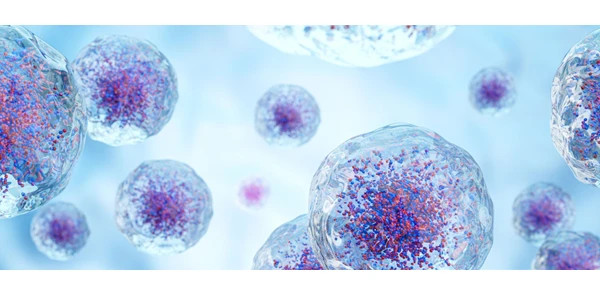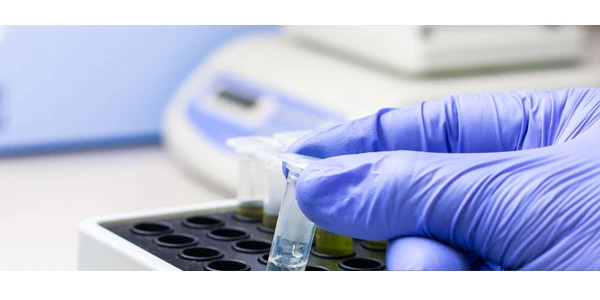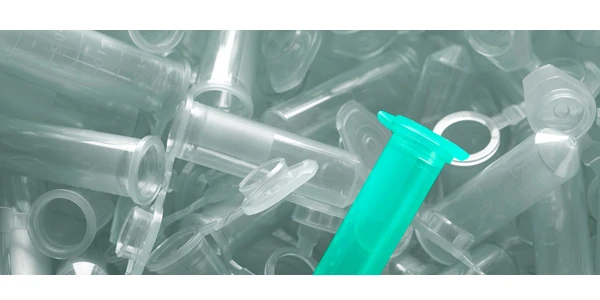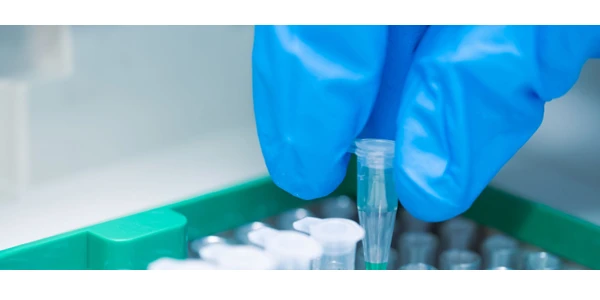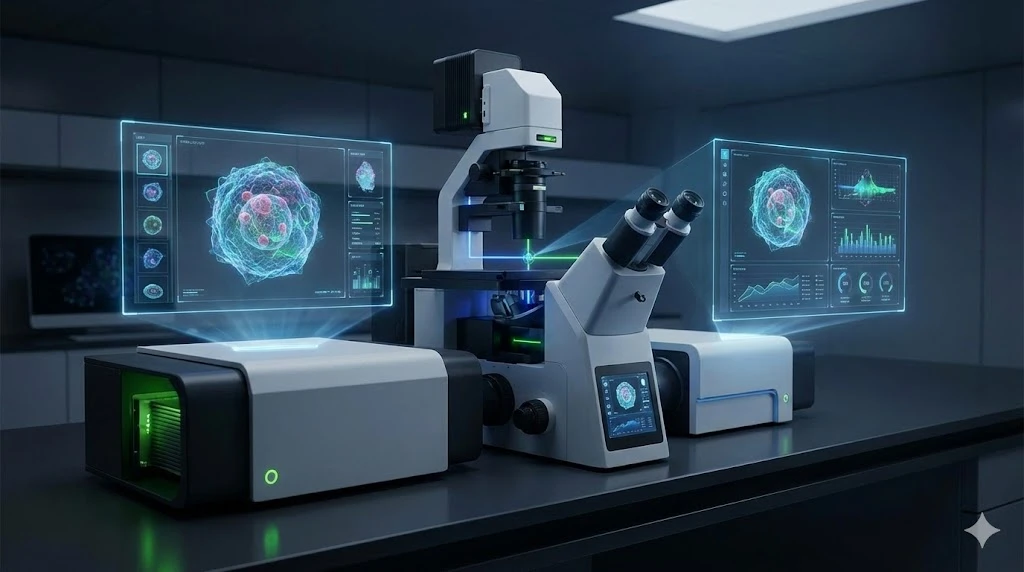Digital PCR: Details and Emerging Applications of this Incredibly Powerful Molecular Tool
Polymerase Chain Reaction
PCR is iconic, much like the personality of it’s late inviter and Nobel Prize winner, Kary Mullis, who passed away in 2019. A now ubiquitous and indispensable technique, PCR makes use of template DNA or RNA, oligonucleotide primers, DNA polymerase, and essential buffers and reagents, to amplify select nucleotide sequences. Direct applications include DNA identification, molecular cloning, and a wide range of applications in life science research and beyond, in fields such as forensics, diagnostics, infectious disease, and other areas.
Quantitative Real-time PCR
RT-PCR, also known as qPCR, takes advantage of the exponential phase of DNA amplification to track concentrations of DNA in a sample. Rather than measuring the end-point amount after PCR amplification has plateaued, qPCR monitors DNA amplification in real-time and provides quantitative information in relation to a control reference.
The obvious advantages over traditional end-point PCR include the quantitative abilities, which can be far more informative in determining discrete RNA, DNA, or gene copy levels in gene expression experiments. Transciptomics, genomics, and time-dependent expression analysis, all benefit greatly from qPCR technology.
PCR Quantitation
qPCR can be performed in relative or absolute quantitative formats, depending on the type of reference standard used for analysis. Relative quantitation is the simpler of the two, and involves comparison of an amplification curve in relation to an internal reference gene. The output is typically on the order of fold-difference resolution.
Absolute quantitation provides a more accurate number of target DNA molecules by comparison of target DNA with DNA standards by the use of calibration curves. To ensure the highest accuracy, the target and a given standard(s) must have the same or near-identical amplification efficiency.
Digital PCR
dPCR extends where qPCR falls short, namely in the accuracy and precision of absolute quantitation and the manner in which target DNA is measured. Both dPCR and traditional PCR methods measure DNA amplification one sample at a time. Digital PCR, however, involves partitioning of the starting sample into a large array of discrete fractions, each undergoing PCR reaction independently. This allows measurement of each amplification event (or lack thereof), the sum total equalling the amount of DNA per total sample.
The term “digital” pertains to the method by which each fraction is recorded, either “0” for no DNA target or “1” for a positive DNA target molecule per partitioned fraction. The method benefits from the use of nanoliter liquid handling and microfluidic technologies which make massive sample partitioning and fluorescence detection possible and facile. This is a simple explanation for a complex process – the mechanism can be explored in further detail here.
What are the Advantages?
The dPCR approach excels over qPCR and traditional techniques in sheer quantitative power. Error rates are significantly larger for qPCR when measuring small differences in DNA concentrations for gene expression analysis. On the contrary, error rates are smaller with dPCR due to the smaller change differences which can be detected in a given partitioned sample. The use of lower amounts of reagents, the decreased background fluorescence, and the removal of interfering factors, all contribute to the success of dPCR for high-fidelity quantitative DNA analysis.
Where are the Most Significant Applications?
- Due to inherent limitations, qPCR is unable to determine changes in gene expression or DNA copy number smaller than two-fold. As well, the method cannot accurately identify low copy alleles among common alleles, for instance in clinical genetic samples.
- In contrast, dPCR enables detection of specific sequences in complex backgrounds, such as GMO gene markers in foods, viral genes in the blood, genetic markers in tissue, and many other applications.
- Rare genetic disorders benefit from the dPCR technique by identification of single nucleotide variations (SNVs) and differences in expression of 100,000-fold or more compared to wild type genes.
- The occurrence of 1 gene target in a background over 1,000,000-fold more diverse genetic targets, such as contaminant detection in environmental samples, can be accomplished as well.
- Another application involves the use of dPCR in liquid biopsy to detect, for instance, genetic markers for certain types of cancer in cell-free circulating DNA taken from blood, urine, CSF, and other biofluids.
Future Applications
The dPCR technique has emerged as a powerful and incredibly versatile approach for an ever-broadening scope of applications. Virtually any research study investigating gene copy number differences or gene mutations can theoretically benefit from the technology, when performed in the proper setting with the right conditions. Use of dPCR to monitor functional output of CRISPR/Cas delivery has emerged as a hot topic as well as use of dPCR as a readout for genetic and diagnostic studies of prenatal development, autoimmunity, cancer treatments and much more.
As the technology further evolves - and the methods and hardware expand in complexity - it will be interesting to see where dPCR impacts next enabling the next-generation of genetics research and clinical diagnostics.
View PCR - RT-PCR - Digital PCR - Reagents and Synthesis listings on LabX.com
Updated February 2022
